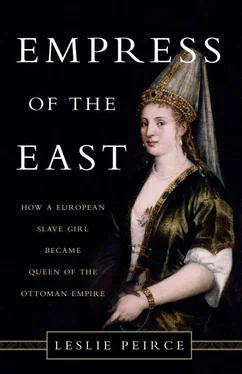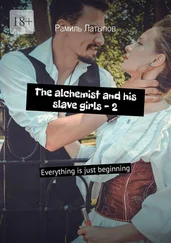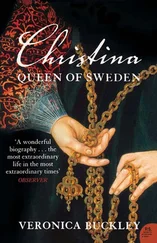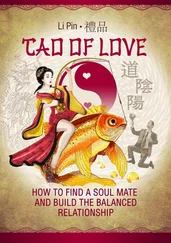Sandys, George, 184–185
seclusion
Roxelana’s, 107, 123–126
sultan’s, 126, 133
Selim I, 10, 34, 63–68, 86(fig.), 93, 107, 113, 123, 157, 160, 190–191, 207, 239, 242–243, 255, 261, 290
Selim II (son), 75(fig.)
arrival in Aleppo, 280–281
ascension to the throne, 304
birth of, 58, 94
circumcision celebration, 103, 107–108
disavowing his family, 307
Iranian campaign, 261
Janissaries’ refusal to acknowledge succession, 310
military campaigns, 201–203
Poland-Lithuania relations and, 26
provincial government at Konya, 214, 216, 226–227
question of succession, 297–299
selection of pages, 135
succeding Mehmed in Manisa, 237–238
Suleyman’s deputy, 258
Seljuk empire, 17–19, 214–216
serial concubinage, 61–64
The Seven Beauties, 169
sexual relationship of Roxelana and Suleyman
conceiving her second child, 58–59
intimacy replacing, 244–245
Roxelana’s first summons, 52–53
sexual responsibilities: the role of the sultan and the women of the harem, 6
Shah Sultan (Suleyman’s sister), 187–188, 193–194, 207, 230, 242–243
Shahnameh (epic poem), 263
shi`i Islam, 107, 111, 228
Sigismund Augustus, 224–225, 252, 256, 296
Sigismund I “the Old,” 25, 223–225, 251–254, 256
Sinan (royal architect), 177, 181, 187, 264, 281, 309
Sitti Khatun, 198
slave trade
European attitude, 24
fates and destinations of the slaves, 22–24
history and control of, 16–17
market locations and practices, 31–32
Roxelana’s origins, 14–15, 21–22
Suleyman’s familiarity with, 21
sultans’ complicity in, 25–26
slaves
arranged marriages of, 211–212
conversion to Islam, 42–44
gift to Suleyman of two Russian slaves, 98
hierarchy of the Old Palace, 28–29
instruction of, 15
Mustafa’s pride and arrogance, 95
physical and mental requisites for concubines, 32–33
rights and protections of mothers, 54
Roxelana’s charitable work, 193
Roxelana’s interest in the training of, 211–212
Suleyman’s concubines after Roxelana, 70–71
See also concubines
social behavior
decline in public prominence of women, 19–20
education and training of concubines, 39–42
imperial seclusion, 46, 123–124, 126–127, 133, 213, 251
Roxelana’s training in, 33–34
Sokollu Mehmed, 269, 305, 308–309, 312
Solakzade Mehmed, 161, 204, 269, 295, 308
sorcery, talk of, 59, 147
spectacles and celebrations, 102–106, 262–263, 280–281
stipends, harem, 88–90, 242
Strongila, 39, 140, 158, 213
succession
Archduke Ferdinand challenging Suleyman’s claim to Hungary, 162–163
Bayezid II and Selim I, 65
Bayezid and Selim (sons), 297–299, 304–309
celebration of coronations, 103
choosing the mothers of princes, 20
concerns over civil war among the princes, 277–278
death of Suleyman, 309–310
death of Suleyman’s children, 54–55
eligibility of sons to succeed their father, 248–249
Mehmed’s claim to Roman successorship, 160
Mustafa’s emergence into politics, 109–110
primogeniture, 6–7, 313–314
Pseudo Mustafa, 287–288
Roxelana and Suleyman’s precedents for, 12–13
serial concubinage and, 60–63
sovereignty: eligibility of sons to succeed their father, 248–249
Suleyman succeeding his father, 63–64, 67–68
Suleyman’s accession to the throne, 63–67
Suleyman’s concerns over Mustafa, 276
sufis, 9, 144, 149, 170, 194, 215, 228–230, 233, 290. See also dervishes
Suleyman I “the Magnificent,” 159(fig), 190(fig.), 203(fig.), 236(fig.), 245(fig.), 270(fig.), 295(fig.)
appointment to Caffa, 93
apprenticeship, 92–93
arrival in Aleppo, 280–281
choosing Roxelana, 44–46, 51–53
Damascus foundation, 290
death of his children, 53–55, 236(fig.)
declining health, 246–247, 258–259
execution of the grand vizier, 10–154
foreign fascination with the Ottoman court, 40–41
fortieth birthday, 111, 208–209
Ibrahim’s history with, 154–157
inherited command, 10
love life, 30
luxury purchases, 24
military hiatus, 219–220
mother of, 20–21, 34–35
need for trusted favorites, 166–169
potential for partners after Roxelana, 70–71
public opinion of Suleyman’s monogamy, 59–60
rivalry between his sons, 304–309
siblings, 37–38
slave women, 98
spectacles and celebrations, 102–106
state building within the Ottoman Empire, 164
succession, 63–68, 297–299
See also correspondence between Suleyman and Roxelana; Hafsa; military campaigns
Suleymaniye mosque, 263–264, 268, 295, 295(fig.)
Sultaniye complex, 232. See also Hafsa
Sunullah Efendi, 315
syncretic religion, 192–193
Tahmasp Shah, 116, 146, 254, 258, 262, 269, 281, 284, 286, 295, 305
Talikizade Mehmed, 293–294
Tamburlaine the Great (Marlowe), 198–199
Tatars, 16–17, 19–22, 24–25, 219,
Tavernier, Jean-Baptiste, 126
television, Roxelana’s life on, 26
Theodora (Justinian’s wife), 194
Theodora (Orhan’s wife), 198
Theodosius I, 174
Theodosius II, 174
titles, 4, 242–243
Topkapi Palace, 12, 129, 189
See also New Palace
Trabzon (Trebizond), 34, 57, 65, 92–93
treason charge against Mustafa, 269–270
tughra (Suleyman’s emblem), 190
Turhan (queen mother), 315–316
Twardowski, Samuel, 26
Ukraine, 14–15, 22–24, 26
ulema, 190–191
urban development, Haseki Avrat as, 177–178
Venice, 69, 97, 157, 160, 196, 257, 275, 312
control of Black Sea slave trade by, 16–17
Venetian ambassadors, 15, 59, 69, 70(fig.), 83, 148, 156, 274
Bragadin, 15, 32, 34, 38, 57, 95–96, 98, 100, 113, 153–158, 165, 168
de’Ludovici, 100, 110, 114, 118–119, 158, 162, 245
Navagero, 72, 83, 97–99, 166, 207, 239, 246–247, 261, 270, 277
Trevisano, 239, 275, 278, 287
Zen, 59, 109, 154, 158–159
Vienna, military campaign, 101–102, 218
virginity, importance of, 32–33, 200, 207
wealth
business interests of wealthy women, 127
income, Roxelana’s, 55–57
inherited wealth, 6–7, 243
widowhood, 37–38
Wolsey, Cardinal Thomas, 153
women
building as consequential gesture, 171
business interests of wealthy women, 127
diplomacy work, 223–224, 251–252
emergence of female patronage, 187–188
entrepreneurs, female, 39, 140
escaping the Old Palace fire, 213
female monarchs, 315–316
informational networks, 139–140
poets, 215 (Mihri Hatun), 278 (Nisayi)
political involvement, 139–140
public prominence of, 19–20
role models for Suleyman, 193–194
Roxelana’s memorial in Palestine, 290–291
Roxelana’s transformation of the harem into a political power, 3–4, 12
Rumi’s spiritual biography, 228–229
seclusion as a mark of distinction, 126
slave market locations and practices, 31–32
Suleyman’s love life, 30
the princes’ circumcision, 106
See also concubines; Hafsa (Suleyman’s mother); Mahidevran (concubine); motherhood
Zapata, Luis de, 167
Zapolya, John, 223
Ziadi (witch), 147–148
Zubaida, 165, 194, 292–293
Copyright © 2017 by Leslie Peirce
Читать дальше












